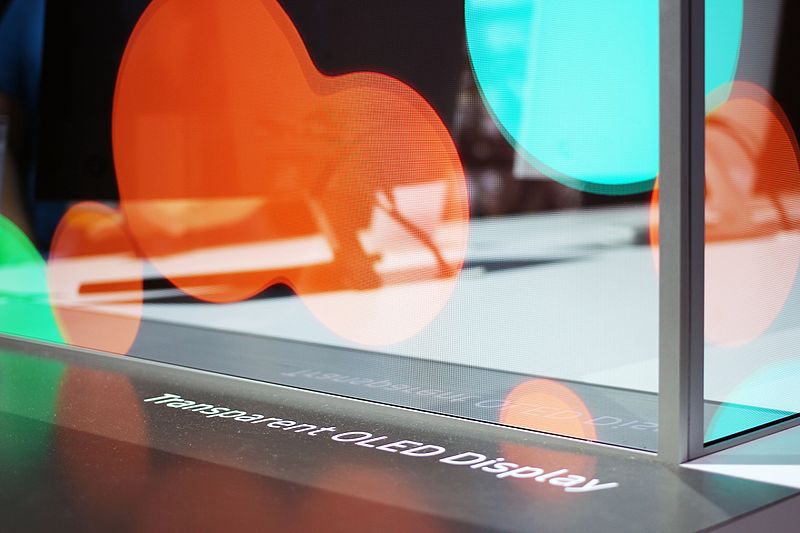The specificity of the production process of modern mobile devices is that some parts of smartphones are purchased from component suppliers. As a result, a large number of gadgets have a similar "stuffing", especially within the same class. If a smartphone is labeled "premium", then it is implied that it must have some standard set of fancy hardware that is currently in demand.
Speaking of displays, it is obvious that OLED (organic light-emitting diode) is in fashion. Samsung has smartphones with OLED-displays, recently Apple announced the anniversary iPhone X, which also received a screen on light-emitting semiconductors.
The main difference between OLED and LCD is that the latter highlights pixels, and OLED screens emit their own light. In this case, brightness of an OLED display can be controlled per-pixel. OLED-displays provide good color rendering, high contrast and brightness, have less weight and dimensions compared to LCD-displays.
One of the advantages is low power consumption, which is directly proportional to the brightness and area of the luminescence. As for the shortcomings, the main problem with OLED displays is the short lifetime of diodes of some colors, which is about 2-3 years.
It is expected that OLED-displays can be replaced by more efficient and economical TMOS-displays. This technology uses the inertia of the retina of the human eye. Also there are developments of Organic TFT-displays - working on technology of organic transistors.
Another drawback of OLED-displays is the high cost. By the way, the new flagship from Apple is more expensive than its predecessors because of expensive components. An analyst at IGI Securities explained that Samsung’s OLED-displays are all to blame. The Koreans force their partner to buy OLED panels at a price of $ 120-130 per unit. For comparison, 5.5-inch LCD display for iPhone 7 Plus costs Apple $ 45-55.
Meanwhile, the Korean LG Display, considered the second largest manufacturer of OLED displays after Samsung Display, has concluded a supply agreement with at least four major Chinese OEM manufacturers of mobile devices.
According to industry experts, next year, Chinese Huawei, Oppo, Vivo and Xiaomi will release high-end models equipped with OLED panels produced by LG Display.
Other sources say that in 2017, LG Display will supply its Chinese partners about 20-30% of the total number of small and medium-sized OLED panels manufactured by the company. Based on this, analysts expect that companies from China will be able to supply about 10-15 million premium smartphones with LG OLED displays.
Currently, LG Display is rapidly increasing production of OLED-products and soon the company will be able to compete in this regard with the current leader of the industry Samsung. According to calculations of specialists, in a couple of years LG will be able to produce about 65 thousand sheets-blanks for OLED displays a month, and annual production of 6-inch OLED-panels with such indicators will reach 120-170 million pieces.
source: reuters.com
Speaking of displays, it is obvious that OLED (organic light-emitting diode) is in fashion. Samsung has smartphones with OLED-displays, recently Apple announced the anniversary iPhone X, which also received a screen on light-emitting semiconductors.
The main difference between OLED and LCD is that the latter highlights pixels, and OLED screens emit their own light. In this case, brightness of an OLED display can be controlled per-pixel. OLED-displays provide good color rendering, high contrast and brightness, have less weight and dimensions compared to LCD-displays.
One of the advantages is low power consumption, which is directly proportional to the brightness and area of the luminescence. As for the shortcomings, the main problem with OLED displays is the short lifetime of diodes of some colors, which is about 2-3 years.
It is expected that OLED-displays can be replaced by more efficient and economical TMOS-displays. This technology uses the inertia of the retina of the human eye. Also there are developments of Organic TFT-displays - working on technology of organic transistors.
Another drawback of OLED-displays is the high cost. By the way, the new flagship from Apple is more expensive than its predecessors because of expensive components. An analyst at IGI Securities explained that Samsung’s OLED-displays are all to blame. The Koreans force their partner to buy OLED panels at a price of $ 120-130 per unit. For comparison, 5.5-inch LCD display for iPhone 7 Plus costs Apple $ 45-55.
Meanwhile, the Korean LG Display, considered the second largest manufacturer of OLED displays after Samsung Display, has concluded a supply agreement with at least four major Chinese OEM manufacturers of mobile devices.
According to industry experts, next year, Chinese Huawei, Oppo, Vivo and Xiaomi will release high-end models equipped with OLED panels produced by LG Display.
Other sources say that in 2017, LG Display will supply its Chinese partners about 20-30% of the total number of small and medium-sized OLED panels manufactured by the company. Based on this, analysts expect that companies from China will be able to supply about 10-15 million premium smartphones with LG OLED displays.
Currently, LG Display is rapidly increasing production of OLED-products and soon the company will be able to compete in this regard with the current leader of the industry Samsung. According to calculations of specialists, in a couple of years LG will be able to produce about 65 thousand sheets-blanks for OLED displays a month, and annual production of 6-inch OLED-panels with such indicators will reach 120-170 million pieces.
source: reuters.com





